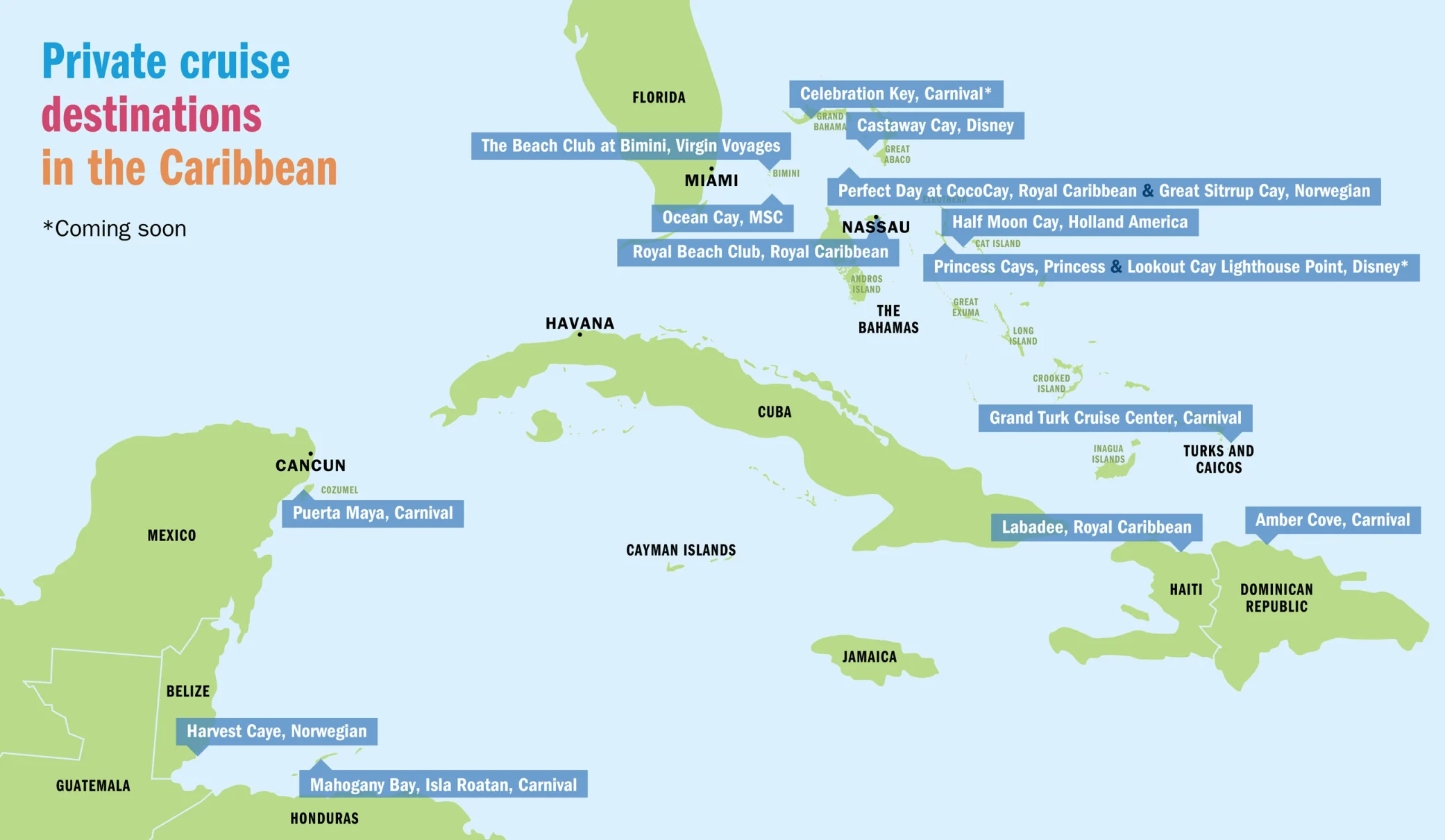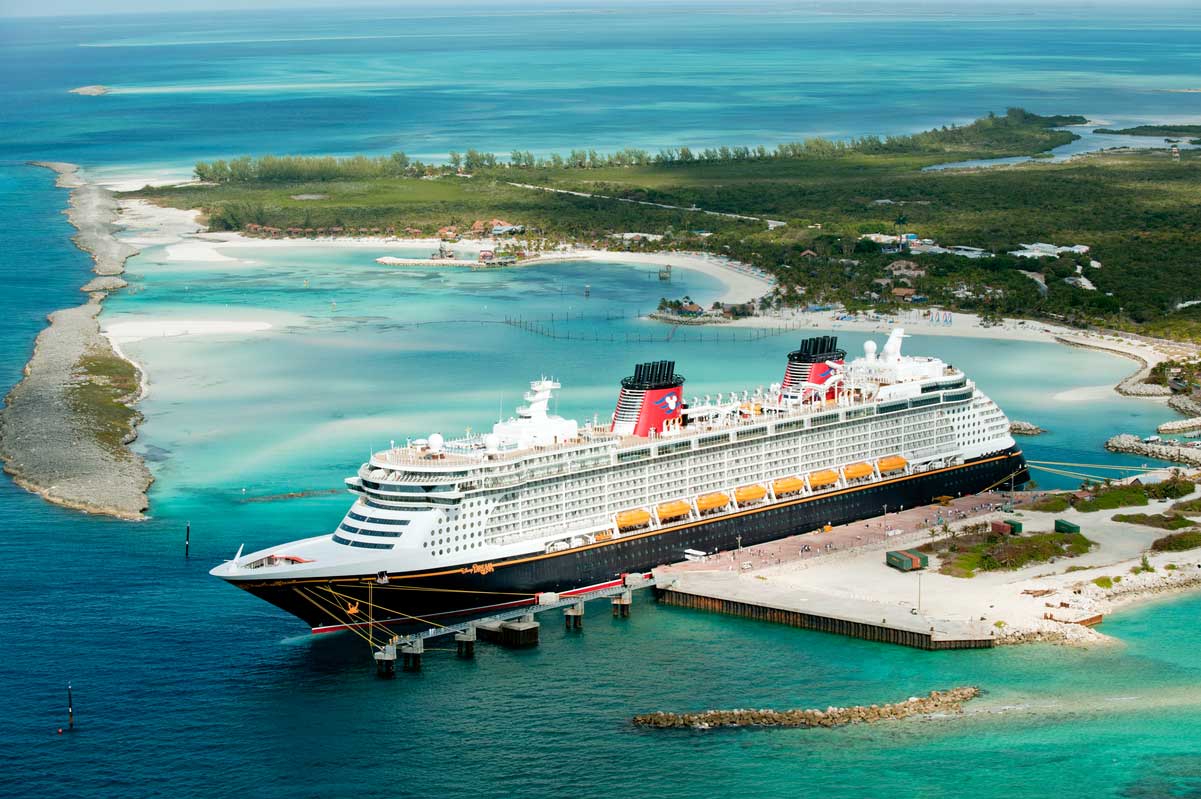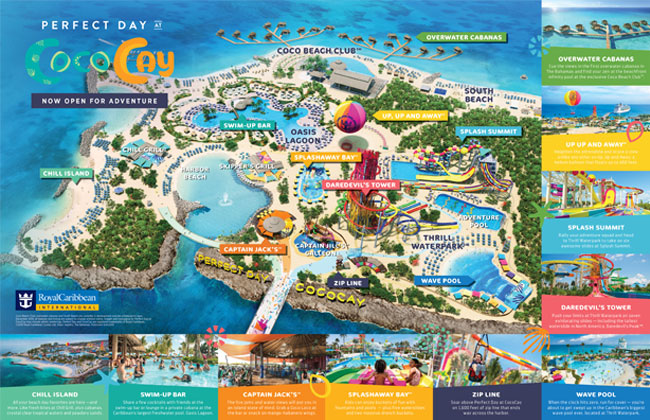A confession: I once wandered into a Bahamian souvenir shack expecting sunny banter and crafty trinkets—only to find a handwritten sign: ‘Cruise Ship Day? Gone to private island.’ That stuck with me. If you’re a cruiser, you might think of white sand, unlimited BBQ, and Instagram-perfect lagoons. But have you paused to ask how these manmade retreats reshape not just your vacation, but entire local economies? Let’s take a beachy stroll down this lesser-explored shoreline.
The Glittering Mirage: Why Cruise Lines Love Private Islands
Big Money, Bigger Beaches
Ever wondered why cruise lines are obsessed with their own private islands? It’s not just about turquoise water and white sand. It’s about control—and cash. Carnival is dropping a jaw-dropping $600 million on Celebration Key, a 65-acre slice of Grand Bahama set to open in July 2025. Royal Caribbean? They’ve already poured $250 million+ into Coco Cay. These aren’t just beaches—they’re carefully crafted, artificial paradises.
Why All the Fuss?
- Full Control: When you step onto a cruise-owned island, you’re still inside their world. They decide what you eat, where you shop, and how you play.
- Theme Park Pricing: Think Disney, but with more palm trees. Entry to the beach might be included, but everything else? That’s where the upcharges start rolling in.
- Locked-In Spending: Every dollar you spend—from cocktails to sunscreen—goes straight into the cruise line’s pocket.
Upcharges Everywhere
You might get free access to the sand, but want a cabana? That’ll be $278–$402+ at Ocean Cay, depending on the season. Maybe you want to try the freshwater lagoon or the water park. Those aren’t just fun—they’re money magnets.
As one industry watcher put it:
“Cruise lines have figured out ways to upcharge folks left and right. So similar to what you might find at a theme park, not everything comes for free.”
Sound familiar? If you’ve ever paid extra for parking at Disney or splurged on a fast pass, you know the drill.
Keeping You in the Bubble
Here’s the real trick. By keeping you on their private island, cruise lines make sure you’re not wandering off to spend money at local businesses. It’s a closed loop. You get off the ship, but you never really leave the cruise’s ecosystem.
A cruise industry expert summed it up perfectly:
“If a cruise ship goes to another port and just lets people out, they’re gonna visit other businesses and that’s money that the cruise line is not making itself.”
So, instead of your dollars boosting a local café or souvenir shop, they’re funneled right back to the cruise company.
By the Numbers
- $600 million: Carnival’s investment in Celebration Key
- $250 million+: Royal Caribbean’s renovation at Coco Cay
- $100 million: Annual profit estimate for Coco Cay
- $150 million: Projected profit for Celebration Key’s first year
- $278–$402+: Price range for cabana rentals at Ocean Cay
What’s the Catch?
Sure, you get a curated paradise. But there’s a trade-off. Local economies miss out, and your experience is carefully managed. Want to explore beyond the palm trees? Not so easy. The cruise line has designed it that way.
It’s a bit like being in a beautiful, sun-soaked bubble. You’re free to roam—just not too far.
Quick Recap
- Cruise lines invest big in private islands—think hundreds of millions.
- They keep you spending inside their ecosystem, not the local one.
- Upcharges are everywhere, from cabanas to water parks.
- It’s all about maximizing profit while giving you a slice of paradise.
So next time you’re sipping a piña colada on a private island, just remember: you’re not just on vacation. You’re part of a very well-oiled business plan.

Local Economies in the Shadow of Paradise
When Paradise Moves Offshore
You step off a cruise ship, expecting the bustle of a Caribbean port: sizzling conch shacks, rows of trinket stalls, maybe a local band playing. But lately, more ships anchor off private islands instead. These are carefully curated slices of “paradise”—owned, leased, and run by the cruise lines themselves.
For the local economies, this shift is more than just a change of scenery. It’s a tidal wave.
Who Wins When Ships Skip the Port?
- Traditional tourist spots—think family-run food stands, souvenir shops, and tour guides—see business dry up. Ships dock at private shores, and passengers rarely leave the cruise-controlled bubble.
- Cruise lines argue these islands help by easing port congestion and providing steady revenue through long-term land leases. Some of these deals last up to 100 years. That’s longer than most of us will ever work.
- Many workers on these islands are locals, which sounds good. But critics wonder: Are these jobs enough to offset what’s lost? Or do they just patch over deeper wounds?
- Governments are fighting back with new taxes. In 2024, a value-added tax (VAT) and higher visitor taxes for private islands were introduced. The goal? Plug the revenue gaps. But it’s a moving target, and nobody’s sure if it’ll work.
By the Numbers: The Cruise ‘Bubble’ Grows
- Four new private island destinations have opened in the last decade. More are coming.
- In 2023, the Caribbean saw 13 million cruise tourists. That’s 44% of all global cruise passengers.
- Many of these islands operate under 100-year lease agreements between cruise companies and Caribbean governments.
- VAT and higher passenger taxes are now being used to try and level the playing field between private islands and local economies.
What’s Really at Stake?
It’s not just about lost lunches or empty souvenir stalls. It’s about the entire flow of money through island economies. As one critic put it:
“All of these traditional avenues of flowing into the Caribbean economies are either totally curtailed or limited by the private islands.”
When cruise lines build their own “closed loop” destinations, they control nearly every dollar spent. Local governments get lease payments and some taxes, sure. But the ripple effect—jobs, small business profits, port fees—shrinks.
You might wonder: why would Caribbean countries agree to this? The answer is complicated. Tourism is their lifeblood. If cruise lines threaten to take their ships elsewhere, governments have to weigh the risk. As one tourism official said:
“It is hard to underplay how important tourism is to these economies. Anything that would lead a cruise line to perhaps sail elsewhere is something they want to avoid.”
Locals on the Islands: A Mixed Bag
Cruise lines point out that most workers on islands like CocoCay and Ocean Cay are Bahamian locals. That’s a positive. But are these jobs as plentiful—or as profitable—as the ones lost in the ports? Hard to say. Details about the lease agreements and the true economic impact are often kept under wraps.
And with new taxes like VAT, governments hope to recapture some of the lost revenue. But will it be enough? Or will the cruise ‘bubble’ just keep growing, leaving traditional businesses further in the shadows?

Rose-Tinted Promises & The Global Copycat Effect
Big Promises, Bigger Questions
You’ve probably seen the headlines: cruise lines promising to transform sleepy coastlines into bustling hubs of prosperity. Tourism ministries listen, dazzled by sky-high visitor numbers and investment figures. It’s tempting, isn’t it? Who wouldn’t want a slice of that paradise?
But here’s the thing—these promises often sound a little too good to be true. As one expert put it,
“They give them very large sounding numbers, and we will increase the number of visitors coming to your country. And they oftentimes present what, when we’re able to check them, turn out to be very rosy and unrealistic figures to the country that they’re negotiating with.”
It’s easy to get swept up in the numbers. After all, the Caribbean welcomed almost 13 million cruise arrivals in 2023. That’s a lot of sun hats and souvenir sales. But what happens when the numbers don’t quite add up for the locals?
From Caribbean Success to Global Franchise
The private island model has been a runaway hit in the Caribbean. Cruise lines build their own little slices of heaven, promising jobs and economic booms. It works—at least on paper. Now, the model is going global.
Royal Caribbean is leading the charge, exporting its ‘Perfect Day’ concept beyond the turquoise waters of the Bahamas. Next stop? Mexico. The much-hyped Perfect Day Mexico is set to open in 2027. And that’s just the beginning.
One industry watcher summed it up:
“I really do think it’s an idea that cruise lines are going to export to other markets… because it’s been so successful in the Caribbean.”
So, what’s next? The Mediterranean? Asia? Maybe even the South Pacific? The private island trend is starting to look a lot like a global franchise—one-size-fits-all, with palm trees and water slides swapped in for local flavor.
Not Every Paradise Pays Off
Here’s where things get tricky. Ministries often measure success by visitor counts, not by the long-term impact on communities. It’s easy to see why: numbers look good in a press release. But the reality on the ground can be messier.
Job creation figures? Sometimes hard to verify. Economic impact? Not always as big as promised. And when cruise lines control the entire experience—food, tours, even souvenirs—how much really trickles down to the local economy?
It’s a bit like being promised a golden ticket, only to find out the chocolate factory is mostly off-limits.
Copy-Paste Tourism: A Hypothetical Detour
Let’s get a little wild for a moment. Imagine Venice—yes, the real Venice—getting its own cruise company micro-‘island’. Would it save the ancient canals from overtourism, or just turn tradition into a floating theme park?
It’s not as far-fetched as it sounds. When a model works in one place, there’s always pressure to replicate it elsewhere. But not every destination is built for copy-paste tourism. Some places lose more than they gain.
Conclusion: Paradise, But at What Price?
The private island trend is on the move, promising prosperity and a taste of paradise wherever it lands. But as cruise lines export their winning formula to new shores, it’s worth asking: who really benefits? The numbers may look impressive, but the reality is often more complicated. As you watch the rise of these floating franchises, remember—sometimes, the most beautiful promises come with a catch.
TL;DR: Private islands built for cruise lines look like a win for vacationers, but their true economic footprint is far more complex—reshaping local business, government revenue, and the future of travel in the Caribbean and beyond.



